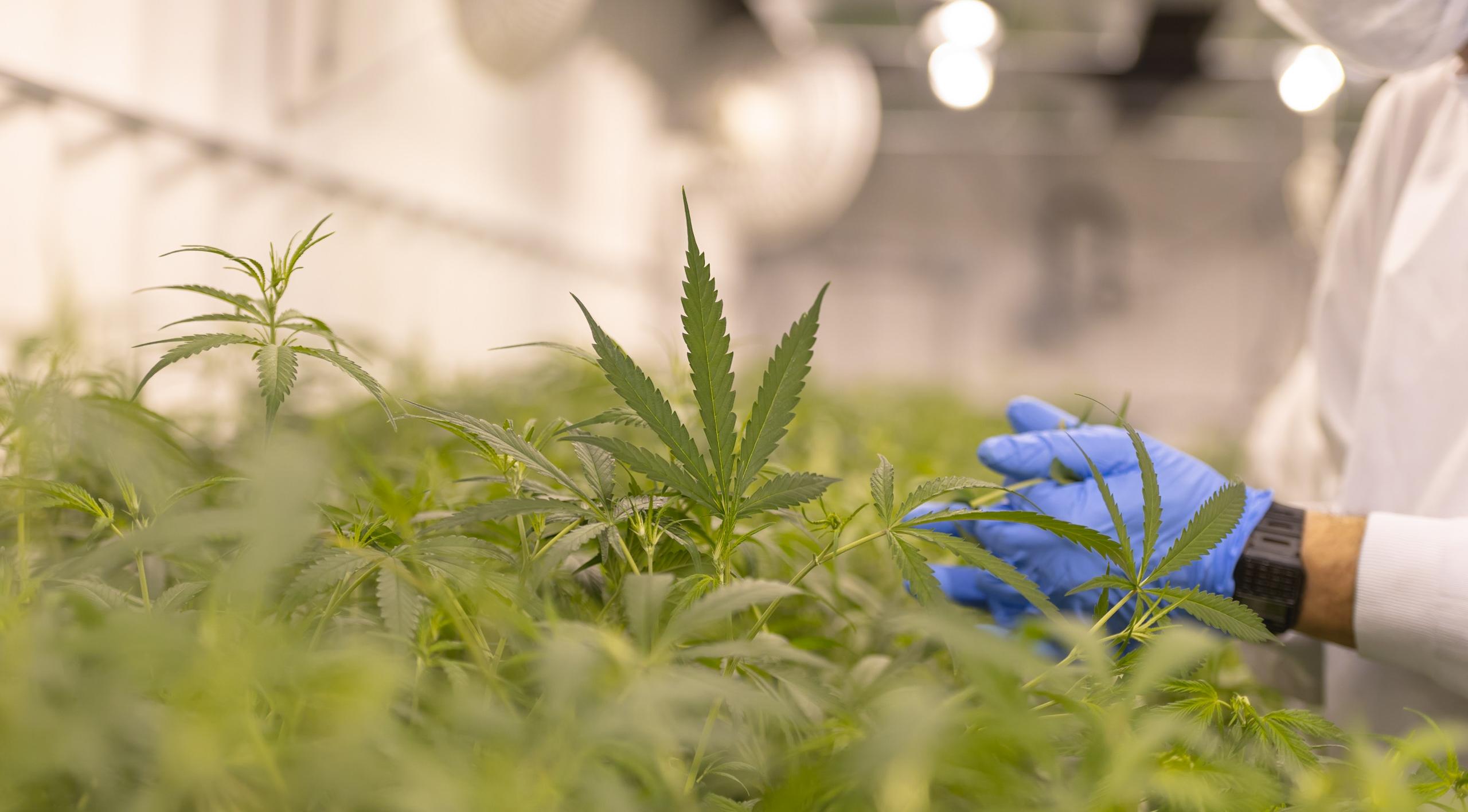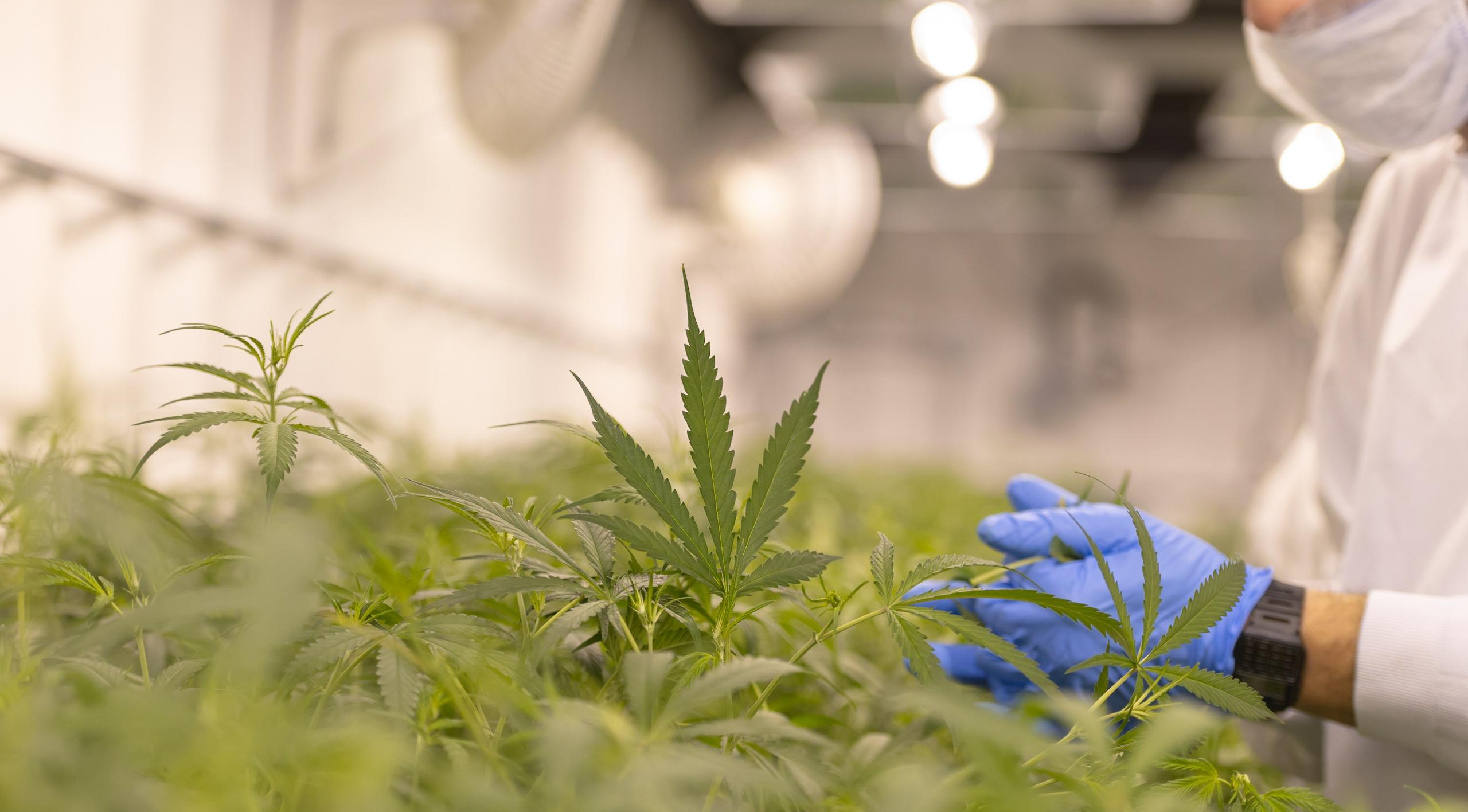
Cannabis Industry: What’s Next?
-
bookmark
-
print

- Keywords:


A track dedicated to the cannabis industry at BMO’s 16th Annual Farm to Market Conference in May 2021 featured 13 cannabis companies sharing their individual stories, including perspectives on the industry’s current and future state. Below are some of the highlights:
The Pandemic Impact
COVID-19 continues to be challenging for most cannabis companies that faced difficulties with managing high operating expenses even before the pandemic. At the conference, industry leaders offered their insights into the pandemic’s enduring influence within the sector. Some companies, like Organigram, aggressively cut their cultivation to match demand. Others struggled to operate and navigate restrictive COVID-19 regulations. Despite this, one of the interesting discoveries was that the pandemic was not too ghastly as it helped differentiate industry winners from losers.
Some firms, like Charlotte’s Web in the U.S., finished the fiscal year much stronger. Domestically, companies like Tilray and HEXO continued to generate positive EBITDA and increase market share both organically, through innovative product offerings, and inorganically, through mergers and acquisitions. The most important outcome from this discussion was that industry participants expressed great optimism about the Canadian and American cannabis sectors in the near and long terms, citing improved vaccine rollouts, increased retail store openings in Canada (especially in Ontario), and pent-up demand as catalysts.
US and Other Markets
Despite the industry’s challenges, including cannabis still being illegal at the federal level, high industry fragmentation, and the lack of regulatory clarity from the Food and Drug Administration with respect to CBD, many still view the U.S. market as the ultimate prize. Many firms continue to position themselves to capitalize on U.S. federal cannabis legalization. Canadian LPs are taking slightly different but viable paths to tackle the U.S. market as outlined below:
-
Tilray is focused on building a consumer packaged goods, or CPG, business in the cannabis space built around lifestyle and healthy living through owning the entire value chain.
-
HEXO is concentrating on teaming up with established CPG companies on a mass channel strategy driven by its “Powered by HEXO” solution, as well as potentially partnering with multistate operators to bring some of its technologies in core cannabis to the U.S.
-
Village Farms plans to leverage and convert one to two of its Texas assets into grow facilities when the time arises.
-
Organigram is focused on CBD and developing CBD-derivative products.
In the U.S., some catalysts to watch out for in the near term include regulatory reform, medical and recreational product innovations, and the broadening of the cannabis consumer base.
While the U.S. is a big prize, some companies are targeting the vast medical cannabis prospects in Europe, the Middle East and Asia, or EMEA, given that these regions have large populations. Europe alone has a population of approximately 700 million, and since these markets are currently focused on pharma and medical cannabis, there are material opportunities for growth due to large drug reimbursement programs. Canadian and U.S. data suggest that reimbursement programs drive consumer consumption versus paying out of pocket. Consequently, overall per capita consumption in some European markets is expected to be higher. Since the EMEA region is opening faster than the U.S., investors could see more near-term benefits in these markets earlier.
Canadian Cannabis Pricing
With respect to the stabilization of prices in Canada, it is important first to understand how the industry got to its current state. Following the legalization of recreational use, many growers supplied far more product than the legal market demanded. This, plus other factors like less desirable cannabis quality and the push to displace the illicit market, led to lower prices. While cheap cannabis seemed like a godsend initially, it translated to firms operating at even greater losses. During the conference, however, most companies noted that on the supply side, cultivation has been coming off as the industry right-sizes.
Some firms like Pure Sunfarms, a subsidiary of Village Farms, are bucking the trend and adding onto production due to their ability to produce in-demand, high-quality flower at some of the lowest cost per gram prices in the industry. This demonstrates that the dropping prices have not been all doom and gloom as they have accelerated improvements in production costs and have given low-cost, high-quality producers a competitive advantage. In addition, falling prices have led to the increased displacement of the illicit market, forced companies to be more efficient, and increased product quality and innovation.
M&A
In the past few months, some big merger and acquisition deals have taken place in the cannabis industry. Aphria closed its acquisition of Tilray in April; Sundial Growers announced its acquisition of Inner Spirit Holdings in May; and HEXO recently announced acquisitions of Zenabis Inc., 48North Cannabis Corp. and Redecan. Tilray’s deal A allows it to realize over $80 million in cost synergies and gain an overall market share of 20%, with a goal of getting to 30%—the largest in the sector.
HEXO aims to become one of the industry’s top two players by increasing market share both organically and inorganically through M&A activity. Sundial Growers deploys M&A strategy to achieve vertical integration, given the correlation between profitability and vertically integrated firms. In view of the nascent nature of the industry, over the next few years we can expect to see both the consolidation and disintegration of firms with no niche, competitive advantage or right to win in whatever product segment.
There are many catalysts to be excited about in the industry. In addition to the further erosion of the illicit market, Canadian retail expansion will provide an expanded distribution footprint for operators to access. Furthermore, rationalization and consolidation are key drivers for a healthy industry. Big pharma’s interest in the sector, and the shift to indoor from outdoor grow given the challenges associated with the latter owing to climate change, are also key events to keep an eye on as they will further drive new product offerings. Given the complexity of cannabis, we are mostly excited about continuous learnings around the plant and how it interacts with our bodies, as well as the industry that surrounds it.

Allen Benjamin
Managing Director and National Lead, Cannabis & Emerging Industries, Commercial Bank, Canada
Allen is a seasoned professional with 20 years of experience across multiple industries, including financial services, in Canada and the Caribbean. As the…(..)
View Full Profile >A track dedicated to the cannabis industry at BMO’s 16th Annual Farm to Market Conference in May 2021 featured 13 cannabis companies sharing their individual stories, including perspectives on the industry’s current and future state. Below are some of the highlights:
The Pandemic Impact
COVID-19 continues to be challenging for most cannabis companies that faced difficulties with managing high operating expenses even before the pandemic. At the conference, industry leaders offered their insights into the pandemic’s enduring influence within the sector. Some companies, like Organigram, aggressively cut their cultivation to match demand. Others struggled to operate and navigate restrictive COVID-19 regulations. Despite this, one of the interesting discoveries was that the pandemic was not too ghastly as it helped differentiate industry winners from losers.
Some firms, like Charlotte’s Web in the U.S., finished the fiscal year much stronger. Domestically, companies like Tilray and HEXO continued to generate positive EBITDA and increase market share both organically, through innovative product offerings, and inorganically, through mergers and acquisitions. The most important outcome from this discussion was that industry participants expressed great optimism about the Canadian and American cannabis sectors in the near and long terms, citing improved vaccine rollouts, increased retail store openings in Canada (especially in Ontario), and pent-up demand as catalysts.
US and Other Markets
Despite the industry’s challenges, including cannabis still being illegal at the federal level, high industry fragmentation, and the lack of regulatory clarity from the Food and Drug Administration with respect to CBD, many still view the U.S. market as the ultimate prize. Many firms continue to position themselves to capitalize on U.S. federal cannabis legalization. Canadian LPs are taking slightly different but viable paths to tackle the U.S. market as outlined below:
-
Tilray is focused on building a consumer packaged goods, or CPG, business in the cannabis space built around lifestyle and healthy living through owning the entire value chain.
-
HEXO is concentrating on teaming up with established CPG companies on a mass channel strategy driven by its “Powered by HEXO” solution, as well as potentially partnering with multistate operators to bring some of its technologies in core cannabis to the U.S.
-
Village Farms plans to leverage and convert one to two of its Texas assets into grow facilities when the time arises.
-
Organigram is focused on CBD and developing CBD-derivative products.
In the U.S., some catalysts to watch out for in the near term include regulatory reform, medical and recreational product innovations, and the broadening of the cannabis consumer base.
While the U.S. is a big prize, some companies are targeting the vast medical cannabis prospects in Europe, the Middle East and Asia, or EMEA, given that these regions have large populations. Europe alone has a population of approximately 700 million, and since these markets are currently focused on pharma and medical cannabis, there are material opportunities for growth due to large drug reimbursement programs. Canadian and U.S. data suggest that reimbursement programs drive consumer consumption versus paying out of pocket. Consequently, overall per capita consumption in some European markets is expected to be higher. Since the EMEA region is opening faster than the U.S., investors could see more near-term benefits in these markets earlier.
Canadian Cannabis Pricing
With respect to the stabilization of prices in Canada, it is important first to understand how the industry got to its current state. Following the legalization of recreational use, many growers supplied far more product than the legal market demanded. This, plus other factors like less desirable cannabis quality and the push to displace the illicit market, led to lower prices. While cheap cannabis seemed like a godsend initially, it translated to firms operating at even greater losses. During the conference, however, most companies noted that on the supply side, cultivation has been coming off as the industry right-sizes.
Some firms like Pure Sunfarms, a subsidiary of Village Farms, are bucking the trend and adding onto production due to their ability to produce in-demand, high-quality flower at some of the lowest cost per gram prices in the industry. This demonstrates that the dropping prices have not been all doom and gloom as they have accelerated improvements in production costs and have given low-cost, high-quality producers a competitive advantage. In addition, falling prices have led to the increased displacement of the illicit market, forced companies to be more efficient, and increased product quality and innovation.
M&A
In the past few months, some big merger and acquisition deals have taken place in the cannabis industry. Aphria closed its acquisition of Tilray in April; Sundial Growers announced its acquisition of Inner Spirit Holdings in May; and HEXO recently announced acquisitions of Zenabis Inc., 48North Cannabis Corp. and Redecan. Tilray’s deal A allows it to realize over $80 million in cost synergies and gain an overall market share of 20%, with a goal of getting to 30%—the largest in the sector.
HEXO aims to become one of the industry’s top two players by increasing market share both organically and inorganically through M&A activity. Sundial Growers deploys M&A strategy to achieve vertical integration, given the correlation between profitability and vertically integrated firms. In view of the nascent nature of the industry, over the next few years we can expect to see both the consolidation and disintegration of firms with no niche, competitive advantage or right to win in whatever product segment.
There are many catalysts to be excited about in the industry. In addition to the further erosion of the illicit market, Canadian retail expansion will provide an expanded distribution footprint for operators to access. Furthermore, rationalization and consolidation are key drivers for a healthy industry. Big pharma’s interest in the sector, and the shift to indoor from outdoor grow given the challenges associated with the latter owing to climate change, are also key events to keep an eye on as they will further drive new product offerings. Given the complexity of cannabis, we are mostly excited about continuous learnings around the plant and how it interacts with our bodies, as well as the industry that surrounds it.
What to Read Next.
Why Cannabis Companies Should Take a Page from the CPG Playbook
Allen Benjamin | June 21, 2022 | Cannabis And Emerging Industries

We’re approaching four years of legalized recreational cannabis in Canada. In that time, we’ve seen some early missteps regarding corpora…
Continue Reading>Related Insights
Tell us three simple things to
customize your experience






Banking products are subject to approval and are provided in Canada by Bank of Montreal, a CDIC Member.
BMO Commercial Bank is a trade name used in Canada by Bank of Montreal, a CDIC member.
Please note important disclosures for content produced by BMO Capital Markets. BMO Capital Markets Regulatory | BMOCMC Fixed Income Commentary Disclosure | BMOCMC FICC Macro Strategy Commentary Disclosure | Research Disclosure Statements
BMO Capital Markets is a trade name used by BMO Financial Group for the wholesale banking businesses of Bank of Montreal, BMO Bank N.A. (member FDIC), Bank of Montreal Europe p.l.c., and Bank of Montreal (China) Co. Ltd, the institutional broker dealer business of BMO Capital Markets Corp. (Member FINRA and SIPC) and the agency broker dealer business of Clearpool Execution Services, LLC (Member FINRA and SIPC) in the U.S. , and the institutional broker dealer businesses of BMO Nesbitt Burns Inc. (Member Canadian Investment Regulatory Organization and Member Canadian Investor Protection Fund) in Canada and Asia, Bank of Montreal Europe p.l.c. (authorised and regulated by the Central Bank of Ireland) in Europe and BMO Capital Markets Limited (authorised and regulated by the Financial Conduct Authority) in the UK and Australia and carbon credit origination, sustainability advisory services and environmental solutions provided by Bank of Montreal, BMO Radicle Inc., and Carbon Farmers Australia Pty Ltd. (ACN 136 799 221 AFSL 430135) in Australia. "Nesbitt Burns" is a registered trademark of BMO Nesbitt Burns Inc, used under license. "BMO Capital Markets" is a trademark of Bank of Montreal, used under license. "BMO (M-Bar roundel symbol)" is a registered trademark of Bank of Montreal, used under license.
® Registered trademark of Bank of Montreal in the United States, Canada and elsewhere.
™ Trademark of Bank of Montreal in the United States and Canada.
The material contained in articles posted on this website is intended as a general market commentary. The opinions, estimates and projections, if any, contained in these articles are those of the authors and may differ from those of other BMO Commercial Bank employees and affiliates. BMO Commercial Bank endeavors to ensure that the contents have been compiled or derived from sources that it believes to be reliable and which it believes contain information and opinions which are accurate and complete. However, the authors and BMO Commercial Bank take no responsibility for any errors or omissions and do not guarantee their accuracy or completeness. These articles are for informational purposes only.
Bank of Montreal and its affiliates do not provide tax, legal or accounting advice. This material has been prepared for informational purposes only, and is not intended to provide, and should not be relied on for, tax, legal or accounting advice. You should consult your own tax, legal and accounting advisors before engaging in any transaction.
Third party web sites may have privacy and security policies different from BMO. Links to other web sites do not imply the endorsement or approval of such web sites. Please review the privacy and security policies of web sites reached through links from BMO web sites.
Please note important disclosures for content produced by BMO Capital Markets. BMO Capital Markets Regulatory | BMOCMC Fixed Income Commentary Disclosure | BMOCMC FICC Macro Strategy Commentary Disclosure | Research Disclosure Statements




